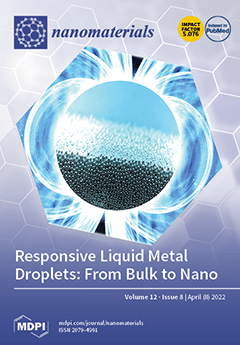Open AccessEditor’s ChoiceReview
Nanocarriers for Drug Delivery: An Overview with Emphasis on Vitamin D and K Transportation
by
Andreea Crintea, Alina Gabriela Dutu, Alina Sovrea, Anne-Marie Constantin, Gabriel Samasca, Aurelian Lucian Masalar, Brigitta Ifju, Eugen Linga, Lidia Neamti, Rares Andrei Tranca, Zsolt Fekete, Ciprian Nicolae Silaghi and Alexandra Marioara Craciun
Cited by 9 | Viewed by 4215
Abstract
Mounting evidence shows that supplementation with vitamin D and K or their analogs induces beneficial effects in various diseases, e.g., osteoarticular, cardiovascular, or carcinogenesis. The use of drugs delivery systems via organic and inorganic nanocarriers increases the bioavailability of vitamins and analogs, enhancing
[...] Read more.
Mounting evidence shows that supplementation with vitamin D and K or their analogs induces beneficial effects in various diseases, e.g., osteoarticular, cardiovascular, or carcinogenesis. The use of drugs delivery systems via organic and inorganic nanocarriers increases the bioavailability of vitamins and analogs, enhancing their cellular delivery and effects. The nanotechnology-based dietary supplements and drugs produced by the food and pharmaceutical industries overcome the issues associated with vitamin administration, such as stability, absorption or low bioavailability. Consequently, there is a continuous interest in optimizing the carriers’ systems in order to make them more efficient and specific for the targeted tissue. In this pioneer review, we try to circumscribe the most relevant aspects related to nanocarriers for drug delivery, compare different types of nanoparticles for vitamin D and K transportation, and critically address their benefits and disadvantages.
Full article
►▼
Show Figures






